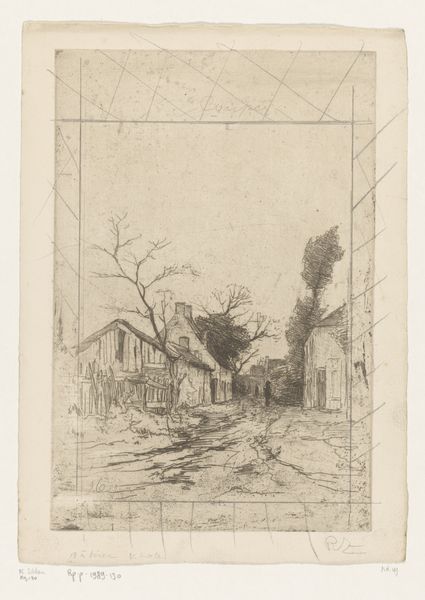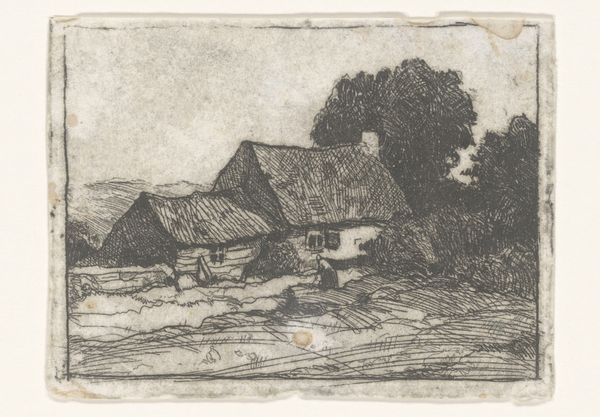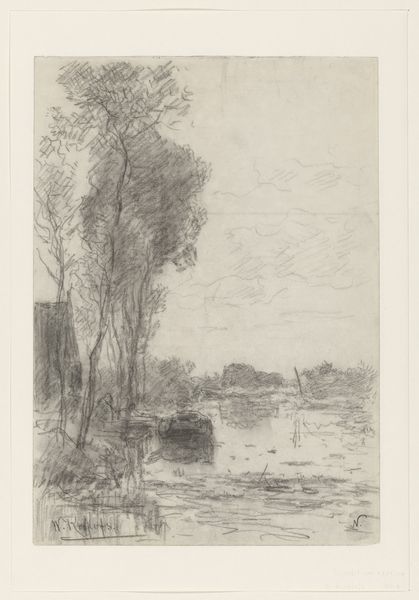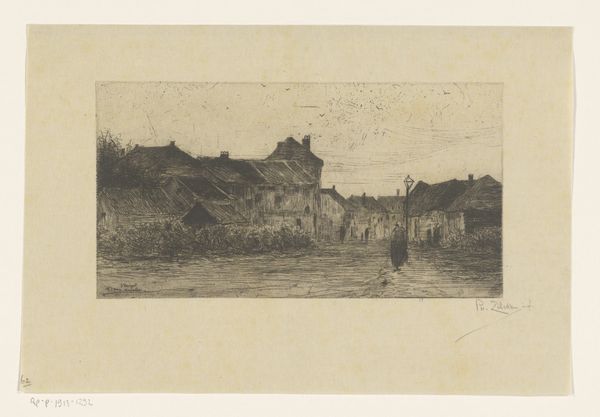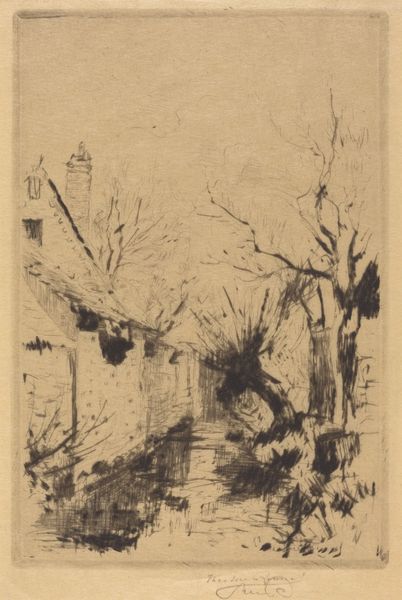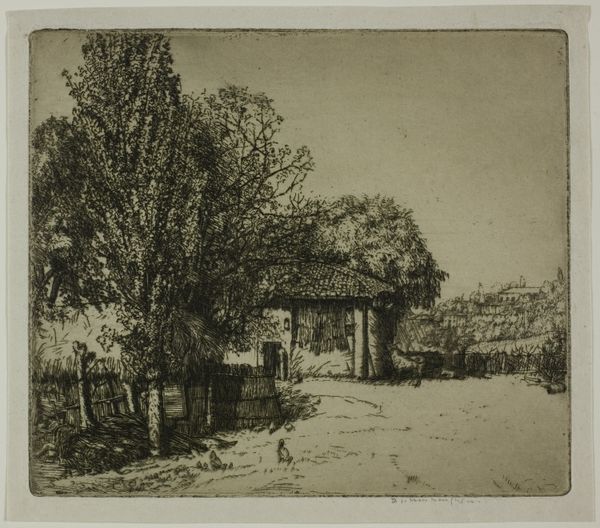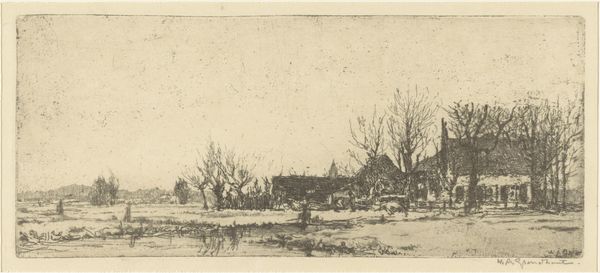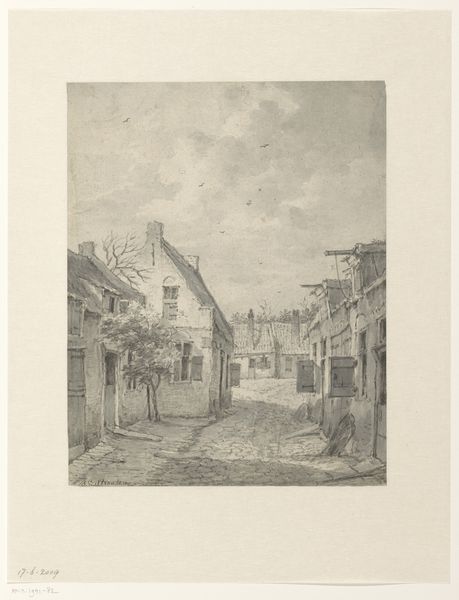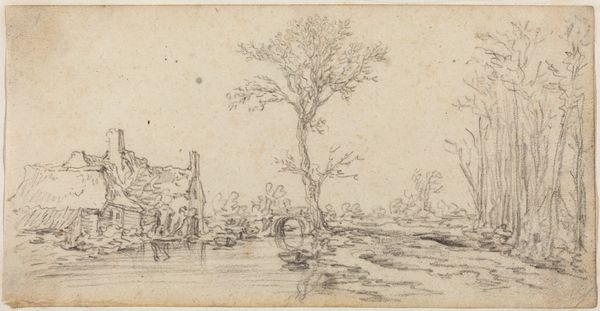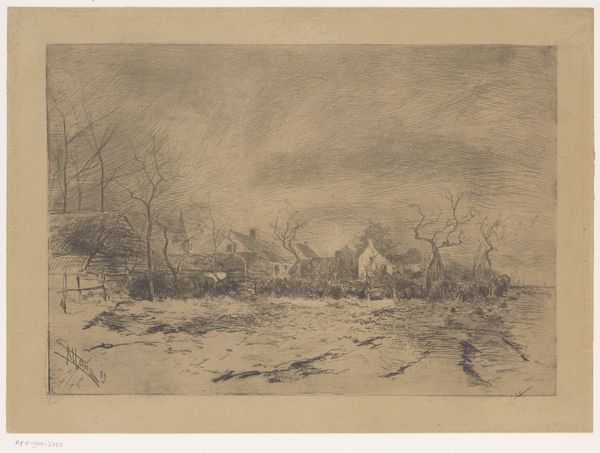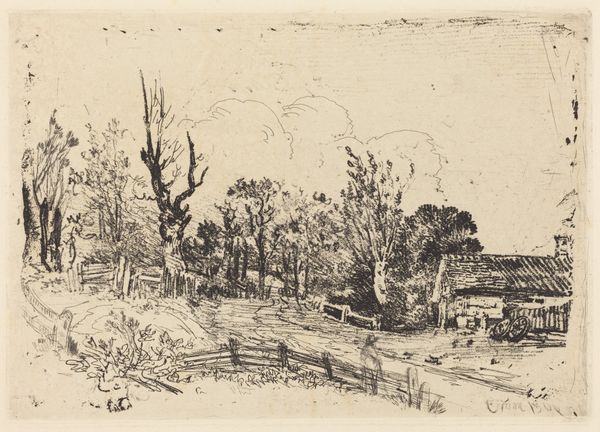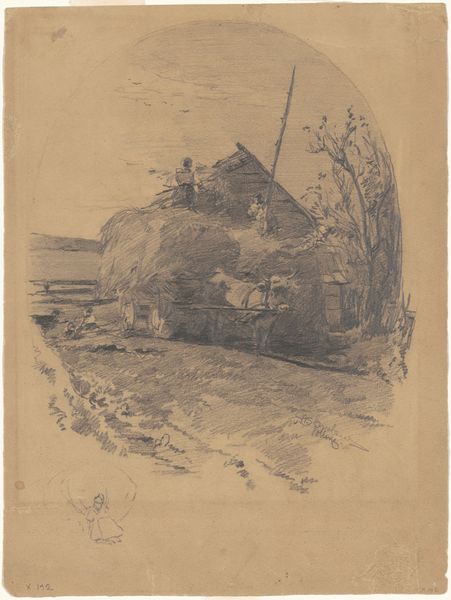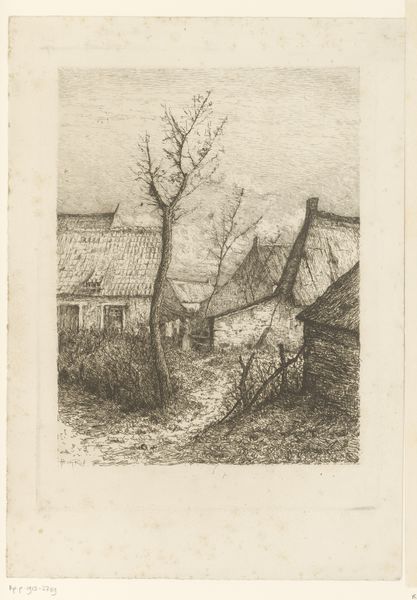
drawing, print, etching
#
drawing
# print
#
etching
#
landscape
#
etching
#
realism
Dimensions: height 301 mm, width 200 mm
Copyright: Rijks Museum: Open Domain
Editor: Here we have Philip Zilcken’s "Dorpsstraat," made with etching sometime between 1867 and 1890. The houses and road look really worn, almost fragile. What do you see when you look at this print? Curator: The print highlights the labor of the etching process itself. Notice the density of the lines, achieved through careful application of acid to the plate. This labor-intensive method emphasizes the artist's engagement with the material reality of printmaking. Also, consider the choice of subject—a common village street. What does this suggest about the intended audience and the art market Zilcken was participating in? Editor: It’s interesting to consider the art market at the time. I suppose prints would have been more accessible than paintings. The depiction of a ‘common’ street probably broadened its appeal? Curator: Precisely. The scene captures everyday life, avoiding the idealized or grand narratives often found in high art. Look at the ground – the mud and puddles so clearly depicted! The labor isn't just in the making; it's present in the scene, the unseen work that makes this village function. How does this realism influence your perception of the community depicted? Editor: It makes it feel much more authentic, and lived-in, rather than some romanticized view. The way you pointed out the labor involved has made me consider not just the image, but how it was made, and for whom. Curator: Indeed. Thinking about the social context, the production process and materiality challenges the distinction between art and craft. Editor: I'll definitely keep an eye out for that intersection moving forward! Thanks for your insight.
Comments
No comments
Be the first to comment and join the conversation on the ultimate creative platform.
